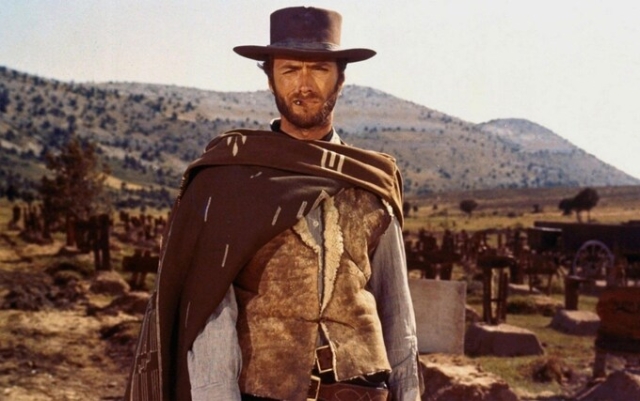 Clint Eastwood as Stranger in High Plains Tramp Photo: Pictorial Press Ltd/Alamy Stock Photo
Clint Eastwood as Stranger in High Plains Tramp Photo: Pictorial Press Ltd/Alamy Stock Photo
«Do you want me to shoot him from behind?» John Wayne asked director Don Siegel during the filming of his western The Gunslinger (1976). Wayne was as stubborn as ever working on his final completed picture. But Siegel insisted Wayne's character needs to kill four more shooters in this scene — now is not the time for subtleties.
«I don't shoot anyone in the back,» Wayne complained.
«Clint Eastwood would have shot him in the back,» Siegel retorted, knowing that the name Eastwood alone would be a provocation to an aging star. Wayne turned blue with anger and yelled, «I don't care what that kid does, I don't shoot people in the back!»
Much has been made of the tension between the two stars over the years. It wasn't the first time two of Western's oldest statesmen had shot at each other. But did they have more in common than previously thought? After all, as Eastwood told Kenneth Turan in 1998, “I grew up watching all the John Ford and Anthony Mann Westerns that came out in the 1940s and 50s. John Wayne in all those cavalry westerns and Jimmy Stewart.» Wayne figured prominently in Eastwood's own understanding of the genre, no matter what happened in between.
However, for a time, Eastwood's darker, nihilistic Westerns and their undoubted success were certainly a point of contention for Wayne. And the tension between them eventually came to a head with Eastwood's second film as director, The Plainswalker (1973), a hyper-violent fable that was a far cry from Wayne's more romantic, celebratory westerns. For Wayne, this change in tone was almost an insult to generations gone by.
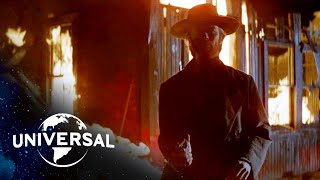
High Plains Tramp turned 50 this year, Eastwood's first western behind the camera. While there have been many shooters on the actor's road to stardom with varying morals, from early television roles like Rawhide (1959-1965) to Sergio Leone's brutal Italian classics like A Fistful of Dollars (1964), it wasn't until the 1970s when Eastwood started directing. And thanks to the success of his debut thriller in 1971, Play for Me in the Mist, Eastwood soon tried his hand at the western. However, Eastwood's film epitomizes the era's starkly pessimistic view of the American Old West, to the point that it feels more like a supernatural horror movie than a classic gunslinger tale.
Written by Ernest Tydeman, best known for his Oscar-winning screenplay for William Friedkin's The French Connection (1971), The High Plains Tramp reflected a more modern approach to the genre in tone and content. It follows a nameless stranger (Eastwood), who may actually be a ghost, as he enters the city of Lago seeking revenge for a US Marshal who was beaten to death in front of the city.
The atmosphere of the film is dark and tense, the violence is relentless, and the sense of honor is worn out. Within the first 10 minutes, the stranger lured three men into a trap and attacked the woman. It perfectly sums up the tone of the new revisionist westerns. “I never imagined myself as a guy on a white horse or in a white hat on a mighty horse…,” Eastwood admitted.
Eastwood's film echoes the new, tougher generation of westerns, sitting comfortably alongside classics like Robert Altman's McCabe and McCabe; Mrs. Miller (1971), Arthur Penn's Little Big Man (1970) and Sam Peckinpah's The Wild Bunch (1968). These new westerns often had a hopeless edge, dealing with impoverished people fighting furiously with poverty, the elements, and each other. «High Plains Drifter» was supposed to be a fable, Eastwood said, «it wasn't supposed to show the hours of hard work of the pioneers. It wasn't supposed to be about settling the West.»
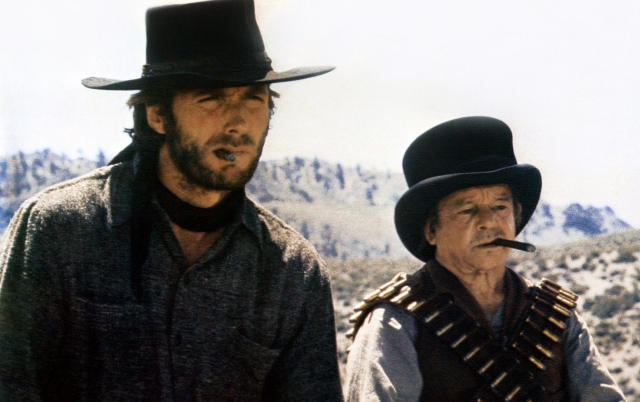 'High Plains Drifter was supposed to be a fable': Eastwood and Curtis in the film Credit: Allstar Picture Library Limited./Alami Stock Photo
'High Plains Drifter was supposed to be a fable': Eastwood and Curtis in the film Credit: Allstar Picture Library Limited./Alami Stock Photo
The old Westerners in these films were not heroes, but were liars, swindlers, and swindlers; greedy for gold, as in Leone's The Good, the Bad, the Ugly (1966), or drunk with lawlessness, as in John Huston's The Life and Times of Judge Roy Bean (1972). They were also more violent films. The shots were no longer just a sound and a return shot, they were often bloody, dirty, and sometimes in the back.
Wayne was loudly critical of the new direction. “For me,” he told Playboy magazine in 1971, “The Wild Bunch was unpleasant. It would be a good picture without the gore.»
Until the new pessimistic Hollywood of the 1960s, Wayne's cinema defined a more heroic representation of the Old West, even when the characters he played proved to be imperfect. His epic quest to the heart of John Ford's The Searchers (1956) as fanatical Ethan Edwards captures this formula exactly. «Well, it has some great stuff in it,» Eastwood said of The Searchers. «I don't think it holds up in the sense that there are some secondary characters that won't play today.»
However, he could have chosen any number of Wayne's performances from Hollywood's Golden Age, each one demonstrating an almost mythical fascination with the landscape and culture of the Old West. Whether it's the stubborn, determined shepherd in Howard Hawks' Red River (1948) or the escaped convict helping a motley group across the country in Ford's Stagecoach (1939), regardless of their origins, Wayne's characters have always found redemption, even if only in the eyes of the spectators. His strong respect for the classic western form certainly explains his often blunt responses when asked about his new direction.
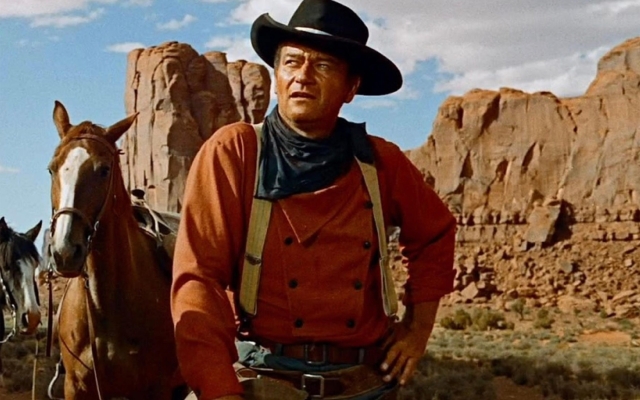 Heroic incarnation: John Wayne in The Searchers (1956). Photo: Pictorial Press Ltd/Alamy Stock Photo
Heroic incarnation: John Wayne in The Searchers (1956). Photo: Pictorial Press Ltd/Alamy Stock Photo
«Do you know of any country whose folklore has been destroyed?» Wayne said in 1972: “This is our folklore… I have seen footage of cowboys trying to be put on the couch, but once you photograph the legendary cowboy, the American and global public will want to see it. Wayne was clearly more than unhappy with the changes taking place in Hollywood and his favorite genre: the changes he thought Eastwood represented when a young man mercilessly gunned down people in Leone's For a Few Dollars More (1965) or Ted Post's films.» Hang them up.» Tall (1968).
However, the stars first stepped on each other's heels in Siegel's Dirty Harry (1971) rather than the western. Wayne claimed that he was offered the role of tough cop Harry Callahan before Eastwood got the role. While it's likely that the physicality demanded of the role meant the studio turned down Wayne, and not the other way around, in any case, the film's success undoubtedly made the star feel increasingly out of touch with American cinema. When asked about the reasons for the refusal, he gave two. “First, they offered it to Frank Sinatra,” he said. “I don’t like it when they offer me rejections from Sinatra. The second reason is that I thought Harry was a rogue cop. The last reason is certainly in keeping with Wayne's honest approach to character.
Either way, Dirty Harry further cemented Eastwood's place at the center of Hollywood. The film was an unprecedented success and ushered in a new era of police procedural thrillers around the world. Indeed, its success was so great that Wayne had to chase Dirty Harry-style roles in later years with smaller films in the same vein, such as John Sturges' McQ (1974) and Douglas Hickcox's Brannigan (1975).
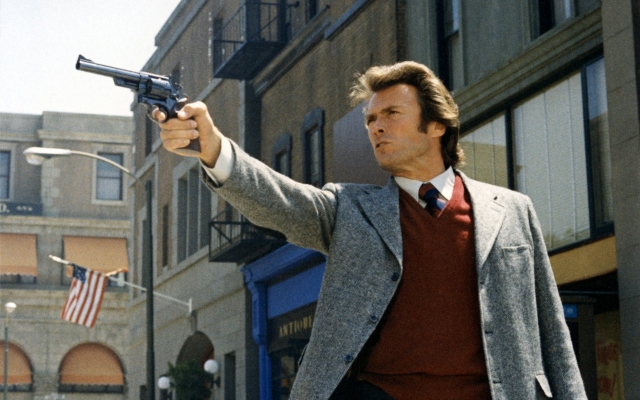 John Wayne claimed he was offered the role of Henry Callahan, eventually played by Clint Eastwood, in Dirty Harry. Credit: Allstar Picture Library Limited./Alami Stock Photo
John Wayne claimed he was offered the role of Henry Callahan, eventually played by Clint Eastwood, in Dirty Harry. Credit: Allstar Picture Library Limited./Alami Stock Photo
After the success of the High Plains Drifter, Eastwood was on the rise with the possibility of new projects. He was drawn to a screenplay by Larry Cohen called The Enemies, a story about a gambler who wins half of an estate from an elderly rancher; both men are forced to work together fighting off the bandits. Eastwood was determined that Wayne would play the older one and he would play the younger one. He willingly sent the script to the actor. Wayne was unimpressed and informed Eastwood in a letter.
Wayne's problem was not The Hostiles or its content, but what Eastwood himself increasingly represented in the genre through High Plains Tramp. «John Wayne once wrote me a letter saying he didn't like the High Plains Drifter,» Eastwood admitted. “He said it's not really about the people who discovered the West. I realized that these are two different generations, and he will not understand what I am doing.”
Eastwood did not respond directly to the letter, but sent Wayne another revised script in the hope that its qualities would draw him to the project. “That kind of stuff is all they can write these days…” Wayne grumbled. According to his son Michael Wayne, when the latest version of Enemies hit a bunch of scripts, his father threw it into the sea off the deck of his Wild Goose boat to the irritated tune of «That piece of shit.» — again.» The project stalled and was not filmed until 2009, and even then as a cheap TV movie without Eastwood.
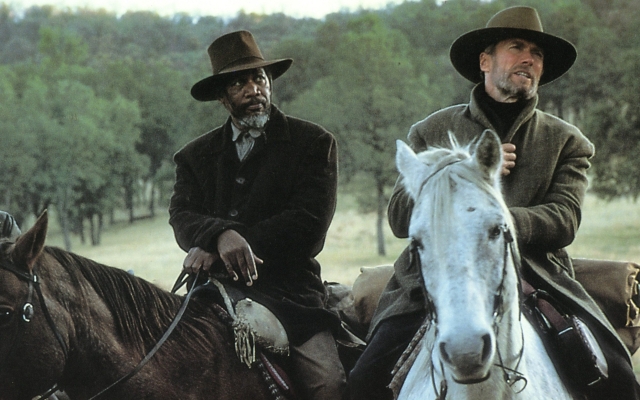 The Final Chapter: Morgan Freeman and Clint Eastwood in Unforgiven (1992) Photo: Pictorial Press Ltd/Alamy Stock Photo
The Final Chapter: Morgan Freeman and Clint Eastwood in Unforgiven (1992) Photo: Pictorial Press Ltd/Alamy Stock Photo
Of course, history shows that Eastwood was right in sticking to his own opinion rather than relying on Wayne's increasingly outdated approach to the genre. His career as a director flourished with a number of classic films such as Outlaw Josey Wales (1976), The Pale Rider (1985) and his 1992 revisionist western Unforgiven, which was the genre's last film to win an Oscar for best movie. Accordingly, Eastwood himself considered The Unforgiven to be the final chapter in Revisionist Westerns. “If I was going to do the last western,” he said, “that would be it, because it sort of sums up how I feel. Maybe that's why I didn't do it right away. I kind of savored it as the last movie in this genre, maybe the last movie of this type for me.”
By this time, Eastwood was the senior statesman of on-screen westerns, not Wayne. But like Wayne before him, he too had political questions about where the genre was heading. With regard to Kevin Costner's 1990 film Dances with Wolves, Eastwood's criticism could easily have been made by Wayne when discussing the revisionist Westerns of the 1960s and 70s. “He was a modern guy from the West who was interested in ecology, women's rights and Indian rights,” Eastwood said. «If you did it the way it is, people probably wouldn't care about it in those days, but maybe that's what it takes to get a new generation of moviegoers interested.»
Despite Despite the huge changes and successful legacy of the darker Westerns of the 1970s, Wayne still didn't want to shoot people in the back. Siegel was friends with Eastwood, so the actor, of course, visited the set of Arrow. According to Ron Howard, who also starred in the film, the two actors finally got together, and despite so many stories of their differences and rivalries, they got along well. There is still a photo of them smiling and laughing on set: the most famous shooter couple in film history has finally holstered their guns, if only for a little while.




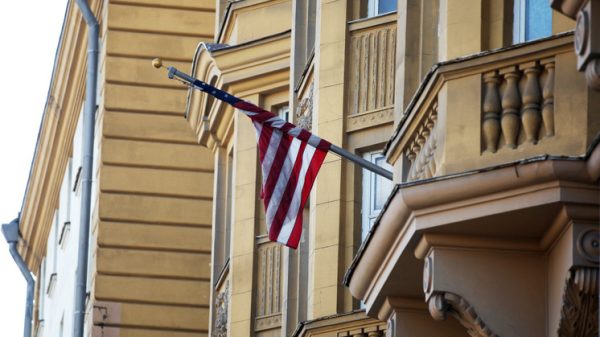


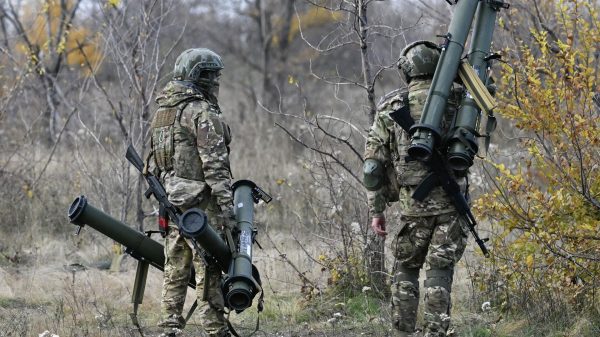
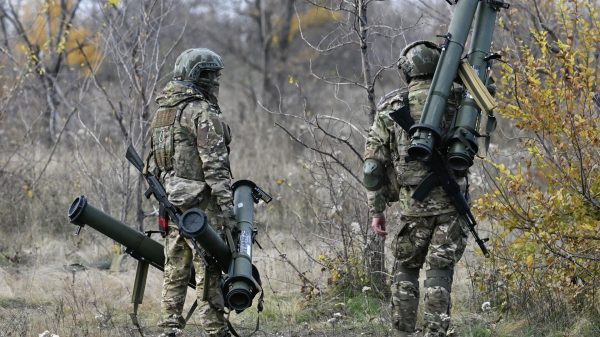


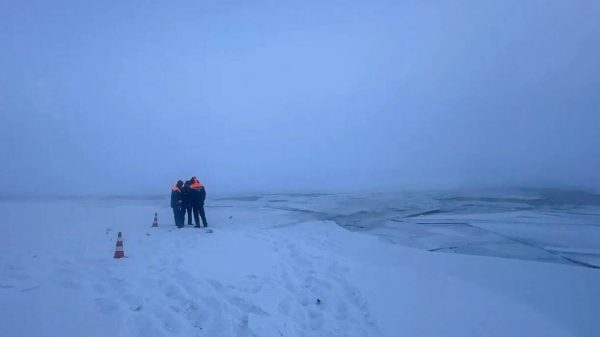






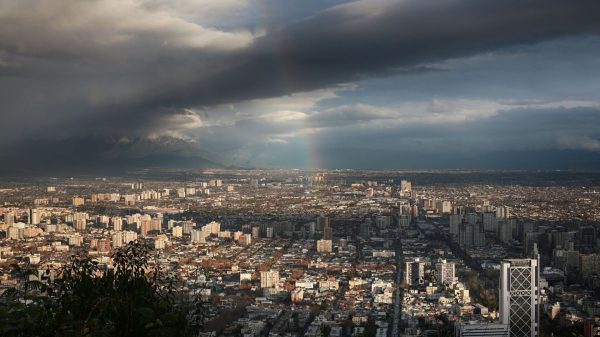
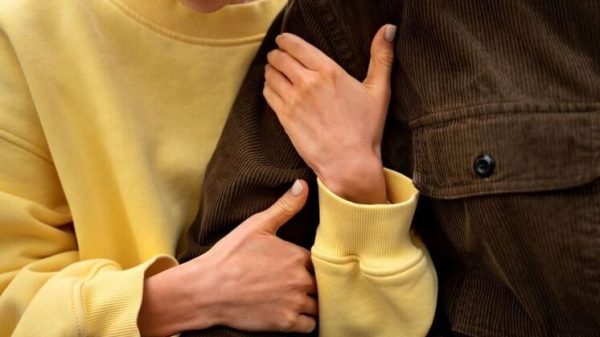














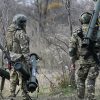
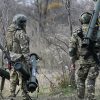


















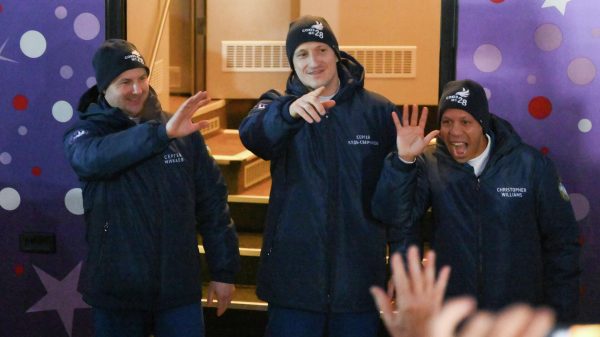

Свежие комментарии